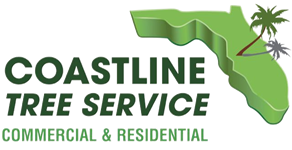
Understanding Tree Fertilization in SW Florida HOA Communities
Tree fertilization is a significant aspect of maintaining a vibrant and healthy landscape, especially in communities governed by Homeowners Associations (HOAs) that often have specific standards of lawn care. This is particularly true in Southwest Florida, where the local climate and soil conditions require unique care for tree landscapes.
Over-Fertilization Of Tree Landscapes In HOA Communities In Southwest Florida Can Have Significant Financial Impacts
For example, improper canopy reduction, often a result of over-fertilization, can lead to hefty tree replacement costs for the community. Additionally, excessive lawn fertilization is recognized as a major contributor to non-point source pollution in watersheds, which could potentially lead to costly environmental cleanup and restoration efforts surrounding the HOA community & its surrounding tree landscape. Lastly, the Florida-Friendly Landscaping Statute emphasizes the importance of following environmentally friendly landscaping practices including that of fertilization, and violation of these can result in disputes and possible fines. Therefore, it’s crucial for HOA communities in SW Florida to ensure appropriate fertilization practices to avoid these financial implications.
Given that trees in Southwest Florida do not require excessive fertilization, it’s crucial to collaborate with a professional tree service like our team here at Coastline Tree Service. We have trained arborists on staff who can accurately determine the ideal timing for fertilizer application and nutrient provision in HOA Home Communities. Our team’s expertise helps ensure that your trees receive the precise care they need, contributing to a healthier and more vibrant community landscape. By partnering with our professionals, you can maintain the beauty of your community, while also adhering to the best practices for tree health and environmental sustainability.
In this blog, we explore the Top 5 trees in the SW Florida area along with the frequency of fertilization required and an HOA should consider when it comes to the management of these trees and their tree landscape.
Frequency of Tree Fertilization
Generally, established trees and shrubs of more than three years old do not need supplemental fertilizer. Over-fertilization can lead to excessive growth, resulting in an unhealthy balance within the ecosystem. However, it’s recommended to fertilize on a regular schedule, typically 2 – 4 times per year2, under the canopy area to the drip line of the plants.
The frequency of fertilization can also depend on the type of tree. For instance, palm and pine trees, common in SW Florida, may require different schedules and types of fertilizer.
Palm Trees
A recommended palm fertilizer for south and central Florida should contain 10 to 20% nitrogen, 5% phosphorus pentoxide, and 10 to 20% potassium oxide. The specific needs of palm trees are due to their unique root structures and nutrient requirements, particularly their need for high amounts of potassium.
Pine Trees
Pine trees, on the other hand, are generally less demanding. They usually thrive in the naturally acidic soils of Florida without needing much additional fertilizer. However, if a soil test indicates a lack of nutrients, a balanced slow-release fertilizer may be applied. Our expert certified arborists can help your community with this test.
Other Trees In SW Florida
Other commonly trees found in SW Florida HOA Tree Community landscapes are the Live Oak, Slash Pine, Sabal Palm (Florida’s state tree), Bald Cypress, and Southern Magnolia. Each of these trees has unique fertilization requirements:
- Live Oak: These trees are hardy and adaptable, requiring little to no fertilization in favorable soil conditions.
- Slash Pine: As mentioned earlier, they typically don’t require much additional fertilizer unless a soil test indicates otherwise.
- Sabal Palm: These palms need a specialized palm fertilizer with the ratios mentioned above.
- Bald Cypress: These trees grow best in wet, swampy soils and require little fertilization unless the soil lacks specific nutrients.
- Southern Magnolia: These trees prefer slightly acidic soil. They may benefit from a slow-release fertilizer designed for acid-loving plants if the soil pH is too high.
Remember, before applying any fertilizer, it’s advisable to start with a soil test. Many Florida soils are naturally high in phosphorus, one of three major nutrients in most fertilizers. Over-application can lead to nutrient-laden runoff, which poses environmental risks.
In short, proper tree fertilization in SW Florida HOA communities requires understanding the specific needs of each tree species and adhering to local regulations to ensure environmentally-friendly practices.
Here at Coastline Tree Service, we can help in that understanding and provide the proper expert guidance to a healthy tree environment.
Is Your Tree Landscape In Need Of Tree Fertilization Service & Expert Advice?
If so, then we are here ready to help! We have the equipment, man power, and on staff expertise (certified arborists & tree experts) to handle all of your tree service health management needs including all tree trimming, tree removal, tree pruning, root pruning & tree stump removal services to name a few.
We proudly serve and offer tree trimming services in Naples, Marco Island, Bonita Springs, Estero, Fort Myers, Fort Myers Beach, North Fort Myers, Cape Coral, Sanibel & Punta Gorda.
Give us a Call at: (239) 895-3230 or contact us online at:https://www.coastlinetree.com/contact-us/
